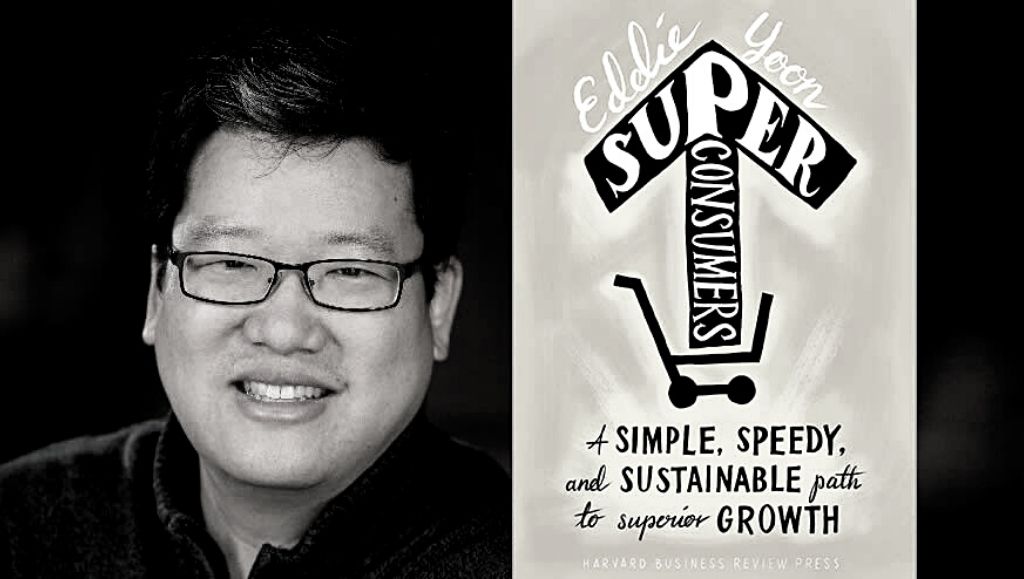Inspiring Instagrammers. Avant-garde political discourse. Dozens of free articles everyday on how to hack your life. The internet is full of bright ideas.
But it also has dark underbellies that can corner you in ways you don’t realize until it’s too late, or spiral you down to unsolicited experiences. One such shady UI/UX manipulation technique takes place mostly in the marketing world and the chances are, you might already be a victim of it without ever realizing it.
Welcome to the wicked world of dark patterns.
It’s not as secretive and dangerous as the dark web — the underworld of the internet — but it’s another morally-deprived place you don’t want to venture out to.
What are dark patterns?
Dark patterns are manipulative nudges that you might encounter in your everyday digital life. Think of the time when you accidentally clicked on a “Yes” button of a pop-up ad because it was swapped with a “No” button that always used to be on the right. Or, the time you were tricked to subscribe to a brand newsletter because clicking on a simple “No” was made deliberately guilt-ridden.
Dark patterns take place in broad daylight and within the ample light of your digital screen’s blue light, but it is dark because it tricks you into doing things you wouldn’t normally do. It deprives you from performing certain actions when the brand perpetuating them has something to gain from you.
It works because most of us have a fleeting attention span and, hence, we skim through things we read online. The internet is crowded with content and we always try to cherry pick the ones that entice us. But our filtering mechanism doesn’t always work in our favor. We don’t pay a close attention to the messaging in a pop-up or read a fine print thoroughly. Manipulative marketers take advantage of this fact can design things or phrase words in a way that exploits this behavior.
It is a psychological sleight of hand that goes unchecked in the eyes of an average commoner. No wonder that it took the sharp, observing eyes of an UX designer Harry Brignull, a PhD in Cognitive Science from the University of Sussex, to first uncover the evil genius behind the manipulative practice in 2010.
“When you use the web, you don’t read every word on every page — you skim read and make assumptions. If a company wants to trick you into doing something, they can take advantage of it by making a page look like it is saying one thing when in fact it is saying another. you can defend yourself against dark patterns on this site.”
– Harry Brignull, UX Designer
Shedding light on the different types of dark patterns
Brignull defines dark patterns as “a user interface that has been carefully crafted to trick users into doing things, such as buying insurance with their purchase or signing up for recurring bills.” But manipulation is a trick that works until you become aware of it. Psychologists claim that when you label your fears and apprehensions, they suddenly stop being so effective.
Hence, the best way to fight a dark pattern is to be more aware about them. Knowing that they are omnipresent in our digital ecosystem is liberating because you will notice almost everyone is a victim of them in one way or another. It helps you navigate your digital landscape with much clarity because now you know where the booby traps are and how can avoid them. You can pass on a seemingly tantalizing opt-in without any baggage.
In 2010, Brignull built an exclusive site for dark patterns as a pro bono gesture to create awareness about the shady malpractice. In the website, he lists down the following different types of dark patterns.
1. Bait and switch
When a business knowingly makes dubious changes to its UI to nudge its users/customers to do something they want, they use the bait and switch technique. Imagine this: you go to the ATM and follow the instructions to withdraw a certain amount of cash. Right before the machine dispenses you the money, it shows the following message:
Do you want a receipt for this transactions?
Save trees. Say no to paper receipts.
✅ ❌
Instead of giving you the usual “Yes” and “No” options, the bank has now switched the options to symbols so that no matter what you press, you will not get a receipt for your transaction. The bait and switch works because now the options are tied to both, the question and the message that follows the main question.
2. Disguised ads
Most people I know have fallen prey to disguised ads than any other types of manipulative marketing practice. It’s a trick where ads are made to look like part of a website’s UI, which when you click, redirects you to a page you didn’t expect to visit. Here are a few examples.
3. Forced continuity
Forced continuity happens when you submit your credit card number to a website to sign-up a free trial. But once the trial period is over, these businesses start charging your credit card without sending you a reminder or notifying you about the deduction. The payment can keep happening until you come to know about it through your bank.
Making people share their credit card details is not a malpractice; a lot of businesses do it in exchange of free trials because they are hopeful that a trialing user will convert as a customer as a result of the value they will experience during the trial period. But they send emails, text messages, or notifications to remind the users before the trial ends, so that they have bonafide permission to start charging the credit cards.
But the few businesses that use it think short-term and don’t hesitate to slyly siphon off the money from their users.
4. Friend spam
Manipulation is bad, but it gets worse when the manipulator tries to extend it to your network of friends. This type of dark pattern relies on getting access to your contacts through email or other channels and exploiting your network to sell a product. Brignull’s website outlines this technique in the case of a 2015 lawsuit where LinkedIn had to pay a fine of $13 million. LinkedIn tricked its users to give access to their contact list on the pretext of giving their “career a strong network”. Eventually, LinkedIn pushed unsolicited emails to the extended network of people claiming that their friends invited them to join the platform.
LinkedIn’s $13 million penalty should be a good reminder for any marketer ignoring the repercussions of using such manipulative ideas in their sales technique.
5. Hidden costs
You have perhaps come across this trickery when booking air tickets or purchasing movie tickets online. You excitedly select a flight or a show based on the price that is visible on the screen and invest quite a bit of time and effort into filling out your details. But by the time you share your credit card details and arrive at the checkout page, the original price shoots up out of nowhere! You are flabbergasted and you consider not going through the checkout. But most likely than not, your commitment to the travel plan or the anticipation for the movie will take you far enough to go through the purchase.
Congratulations — you have been duped by the hidden cost technique in broad daylight despite your best interests.
6. Misdirection
Misdirection happens when a website tricks you for seemingly smaller traps while getting your explicit consent for a bigger action. Let’s take a free trial as an example once again. When you sign-up with a website for a free trial, they might already check the following boxes by default:
– Send me daily product updates and weekly news digest
– Share my email with partner businesses to receive ads
– Email me about the latest offers and cool discounts
Misdirection tricks you into giving consent to things that are not made visually pertinent in the opt-in page. It makes it look like they have your consent, while they distract your attention with something more overt such as a call-to-action message in big, bold fonts.
7. Price comparison prevention
Some brands reportedly make it difficult for its users to compare the price of a product with other items, depriving them from making a sound decision. For example, if you are looking to buy peanut, butter, and jelly separately, the online retailer might show a bundle that offers all three articles with an artificially inflated price. The search results might deliberately refrain from displaying the three items which might account for a lesser value when bought individually.
8. Privacy zuckering
This technique borrows its name from the Facebook’s CEO and co-founder, Mark Zuckerberg, because the platform was famous for duping people into sharing more personal information than they really wanted to. It’s become less and less prevalent these days because of stringent laws and more caution user awareness, but that doesn’t mean it has completely stopped. Some brands still practice it as a way to make money; they include it as part of their fine-print agreement that allows them to share users details with other businesses when the users first sign-up with a business.
9. Roach motel
Brilliantly named and cleverly carried out, Roach motel is the modern, online version of a maze that’s extremely easy to get in but almost difficult to get out of. Think of Eagle’s Hotel California song lyrics — You can check out any time you like / but you can never leave!
We have talked about how amazon.com practices the Roach motel model of dark pattern in our #CoffeeConversations, you can watch it here.
It’s very easy for anyone to create a new account with amazon.com, but it’s not so easy to delete one’s account without getting frustrated. It’s because amazon.com account deletion page is intentionally buried deep down in the crevices of the website which is hard for a customer to find easily. It might be flattering for a user to know how badly amazon.com wants its users’ business; but at deeper level, it’s disturbing how it tries to retain (read: confine) them.
10. Sneak into basket
Sneak into basket is kleptomania in reverse, carried out by a brand. It’s also often referred to as negative option billing or inertia selling. Websites that sneak items into their users basket use several kinds of distraction techniques to keep inflating a user’s checkout cart so that they can somehow convince the buyers to buy everything and hence get the most value out of a purchase. It’s like sending goods and articles to someone’s house for them to use it, followed by a bill a week later demanding the payment for the items. It was so common in practice especially in the UK that the government there had to make it illegal in 2000.
11. Trick questions
Trick questions requires careful wordsmithing of phrases or questions that read like a riddle. Most people fall for the intended action, which is to give the perpetrator brand what they want. Recall the ATM’s question about print receipt which is a close example for this technique as well. The usual meaning of a phrase, statement, or a questions is altered to mean something else so that the users unwittingly fall for the trick.
If any of the dark patterns mentioned above have a deja vu effect on your memory, take heart in knowing that you are not alone. These misdirections can manipulate even the most steel-willed people because it plays on our subconscious thinking and biases.
Don’t stay in the dark
The perpetrators might not agree when I say this, but these shady practices short-term strategies gets marketers nowhere. It might get them a few extra bucks or earn a bunch of leads as a result of misdirected UX, but that’s about it. It’s better to focus on long-term growth marketing strategies and to maintain an honest relationship with their customers rather than trick them into something they wouldn’t do in their sober state.
But there is a bright side to everything. Acknowledging that we are surrounded by the presence of dark patterns all around us helps you become more skeptical in your online manuevours. You now double-check the URL address of certain websites or delete an email if what they are offering is too good to be true.
Nevertheless, the perpetrators are getting better and smarter. And it’s our responsibility to put on a guard.
Dark pattern is the reason why you can’t unsubscribe from a newsletter once you subscribe to it. It’s the reason why you still have online accounts with vendors, and get emails from them, even though you have tried to delete your account. It’s why your credit card gets unexplained charges from time to time.



Hi, very good article
Thanks for sharing keep up the good work.
Hi Subrata. Thank you. I’m glad you liked the article.
[…] dark patterns as much as […]